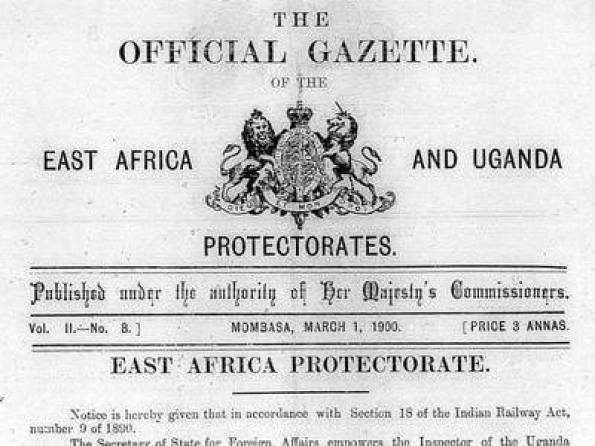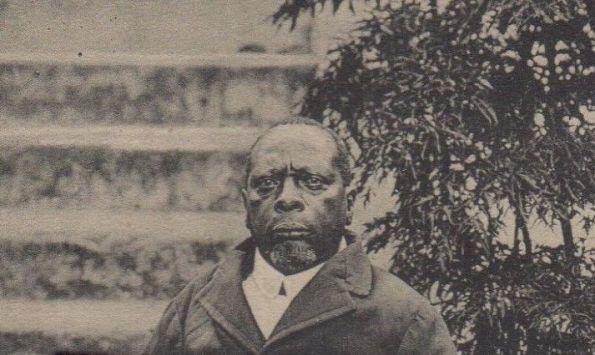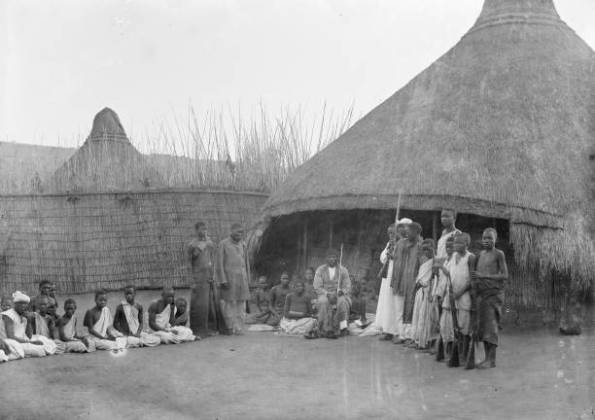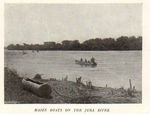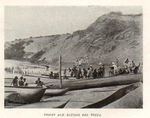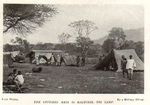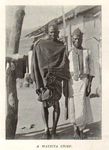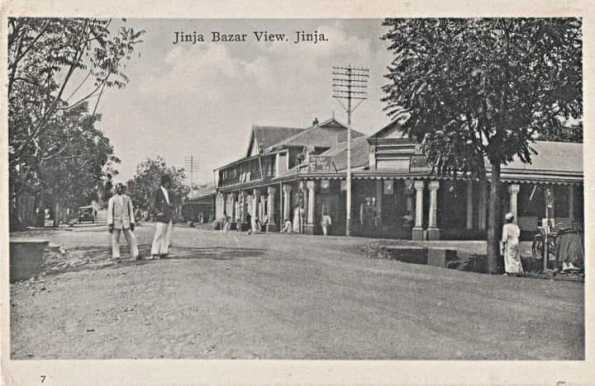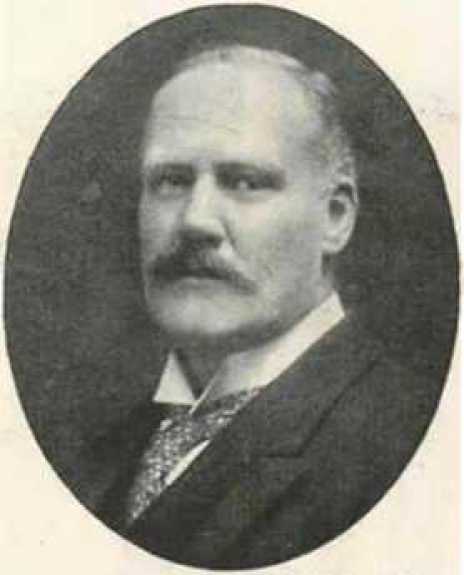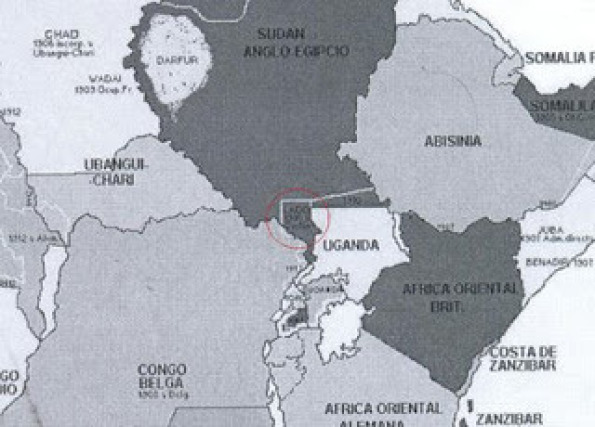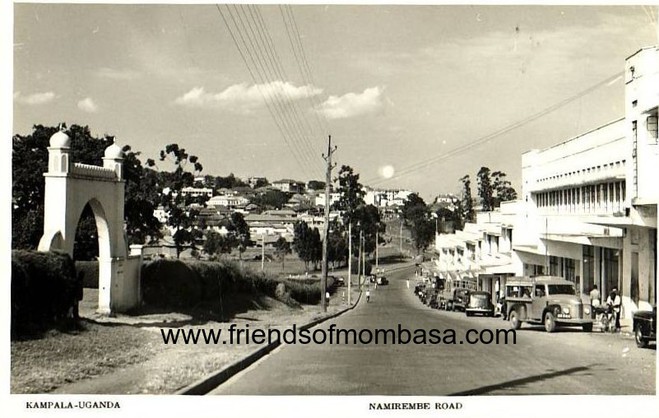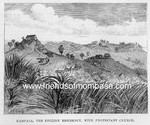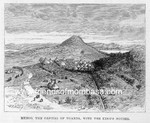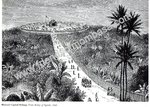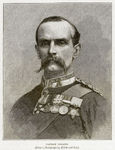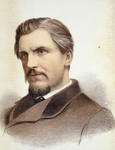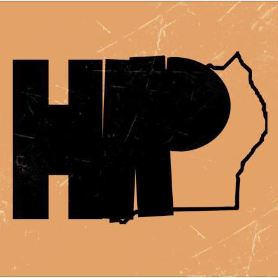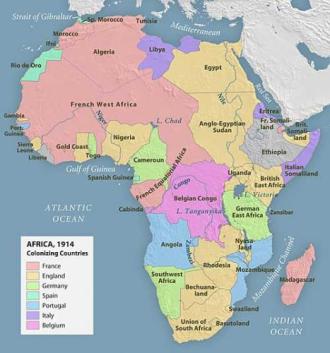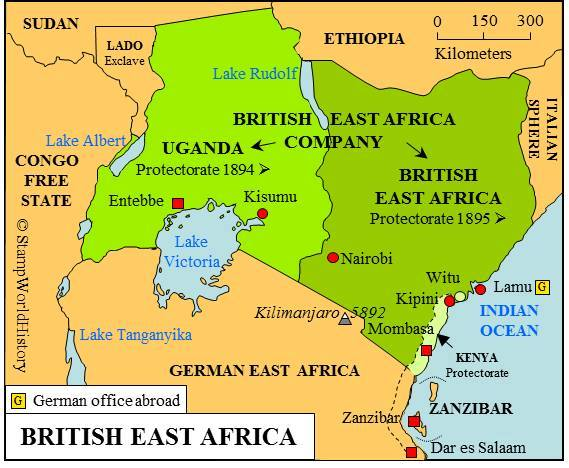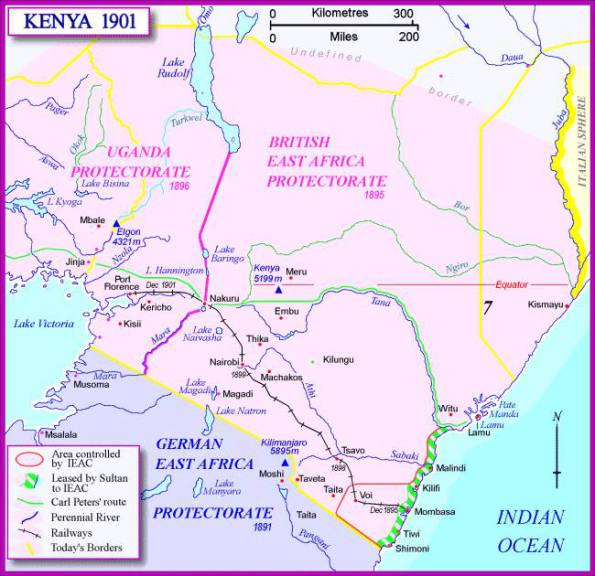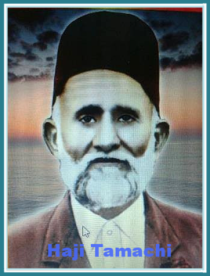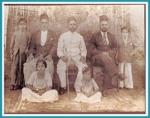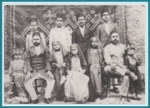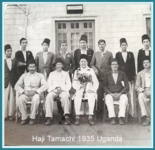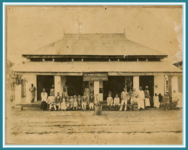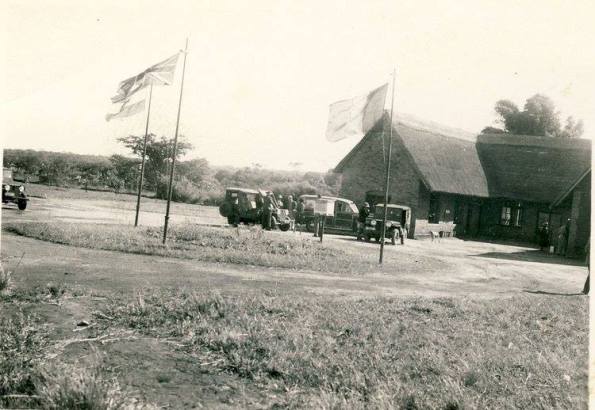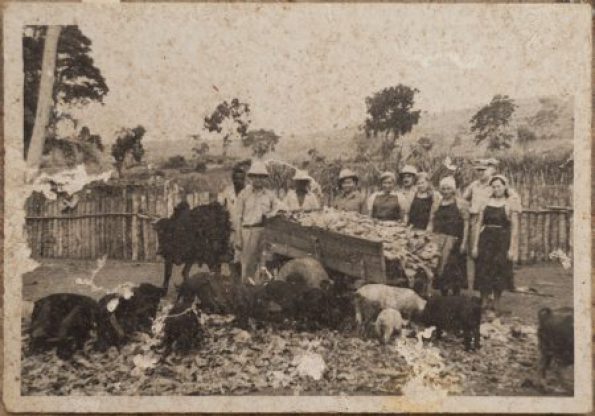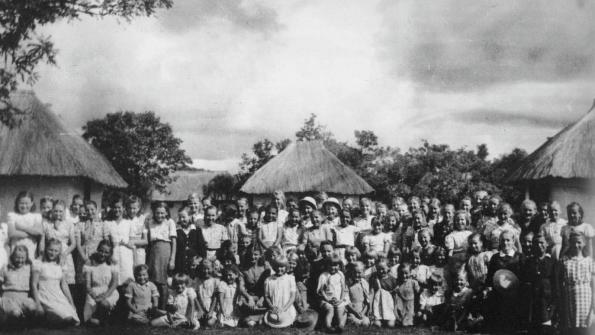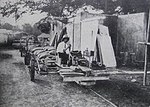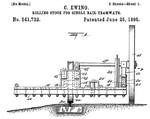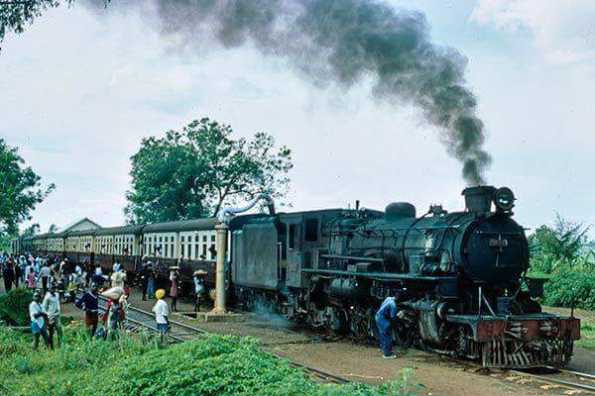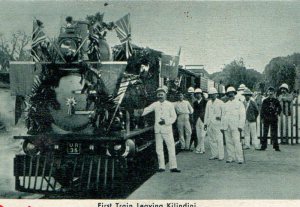UGANDA
Carl Peters 1890 signed treaties in Wanga, Mukulu and Buganda. The British could not allow German intervention in this area, they had to act fast….Anglo/- German agreement followed and that is what
happened… all for the colonization of the Ugandan Kingdom land and the source of the Nile in one sweep.
Since Ugandan Kingdoms and its people lived peacefully until the arrival of Lugard, their fate was sealed and his stay in Uganda from 1889-1892 agitated the locals and Uganda was under civil war (The French were there too) … Catholics and Protestant were turned against each other.... one can question or assume why would people of caucasian back ground bring both its Christianity faiths and divide its followers?
Whilst this was left to seethe on, the following year in 1893 seen Sir Gerald Portal’s journey to Uganda and transferred I.B.E.A to Foreign Office, there was
never any “Under the International Law of the time” .
Later on in 1894 it was established that Uganda became a British Protectorate.
1895 Britain government assumed responsibility for the British East Africa protectorate..
BUNYORO - KITARA KINGDOM - History
On April 9th, 1899, Kabalega was captured by the invading colonial forces and was sent into exile on the Seychelles Islands.
The Kingdom of Bunyoro-Kitara is the remainder of a once powerful empire of Kitara. At the heght of its glory, the empire included present day Masindi,
Hoima, Kibaale, Kabarole and Kasese districts; also parts of present day Western Kenya, Northern Tanzania and Eastern Congo. That Bunyoro-Kitara is only a skeleton of what it used to be is an
absolute truth to which History can testify.
With the capture of Kabalega, the Banyoro were left in a weakened military, social and
economic state, from which they have never fully recovered. Colonial persecution of the Banyoro did not stop at Kabalega's ignominious capture and exile. Acts of systematic genocide continued to be
carried out against the Banyoro, by the colonialists and other foreign invaders.
http://www.bunyoro-kitara.org/7.html
It was an innocuous story published in the inside pages of New Vision on Tuesday, about the Omukama of Bunyoro, Solomon Gafabusa Iguru, congratulating the new president of Kenya, Uhuru Kenyatta, on his election.
Bunyoro Kingdom sources refused to answer any questions pertaining to Kabalega and Kenyatta, or why the Omukama had congratulated Uhuru Kenyatta.
About the Jomo Kenyatta visits to Bunyoro, they said it was ‘normal’. When asked if Uhuru has visited the kingdom, they said ‘not yet’.
https://www.newvision.co.ug/new_vision/news/1317195/kenya-president-uhuru-grandson
--------------------------------------------------------------------------------------------
Soon the social media in Uganda was full of talk about ‘Iguru congratulating his cousin’.
The theory that the first president of Kenya was the son of the Omukama Kabalega o f Bunyoro-Kitara stems largely from the remarkable resemblance between Kabalega and Jomo Kenyatta.
Kabalega and Mwanga, the deposed Kabaka of Buganda, were eventually captured in the plains of Lango in 1899 by a combined force of British, Baganda and Nubian troops. Kabalega was shot in the right arm which had to be amputated.
They were then marched into exile. On their way to the Seychelles through Kismayu, Kabalega’s wound became severely septic. His journey was halted and he stayed in Kenya at a place called 'Kikuyu' for two years to undergo treatment, according to colonial records.
https://www.the-star.co.ke/news/2013/04/13/ugandans-claim-uhuru-is-their-grandson_c761725
1891. Katikiro, Apolo Kagwa seated in centre of a group of Ugandan boys.
Sir Apolo Kagwa was born about 1869 and was a member of the Grasshopper clan. He became a mugalagala (page) to Kabaka Mutesa I, and was baptized an Anglican sometime before 1885. During the persecutions under Mwanga (v. Uganda Martyrs) he escaped with a severe beating. He was quickly restored to favor and made leader of one of the newly formed companies of royal guards. In 1888 he was for a short time mukwenda (a senior chief) under Kiwewa (v. Wars of Religion) and in the Muslim seizure of power he took refuge in Ankole, becoming leader of the Christian forces after the death of Nyonyintono. In 1891 he was Muganda leader with Lugard of the forces which defeated the Muslims. In 1892 he became Katikiro (chief minister) of Buganda. In 1894 he led the Baganda forces which together with the British attacked Bunyoro. By this time he was leader of the Anglican party and influential on the Mengo Church Council. Over the next few years he was instrumental in getting Christian Baganda teachers sent to Koki, Toro, Bunyoro, and Ankole, being probably as much concerned to increase Buganda’s influences as to spread the Gospel. When in 1897 Mwanga rose in arms against the British, Kagwa and Stanislaus Mugwanya, after some hesitation, sided with the British. When Mwanga was desposed, they were both made regents for Daudi Chwa, together with Zakariya Kizito Kisingiri. At the time of the 1900 Agreement he received one of the largest land allotments (30 square miles). He was a prolific writer, and his first book, Bassekabaka be Buganda, (Kings of Buganda) was published in 1901. It was probably through his association with John Roscoe’s researches that he was encouraged to write. In 1902 he attended the coronation of King Edward VII and his visit is described in* Uganda’s Katikiro in England* by Hamu Mukasa. He was made much of by CMS supporters, and also returned with a knighthood. Although Kagwa had many of the qualities of a good leader he was also arrogant and impetuous, having risen to considerable power, he not unnaturally made enemies. When Daudi Chwa came of age in 1914 he did not want to lose the power he had had as regent, and he also quarreled with Yosua Kate the mugema over their respective roles in the celebrations. British Protectorate officials in the post-war years, as well as Chwa, who wished to free himself from Kagwa’s control, found him increasingly difficult and reactionary. In 1925 matters came to a head and he was forced to resign. He died the following year. Like Nuwa Mbaguta he was quick to accept new ideas, and although reactionary in later life, did much to help Buganda accept and adjust to new influences.
source: Louise Pirouet for https://dacb.org/
The African Kingdoms of The Great Lakes – The First Humans Who Lived In The Nile
Omukama – Hereditary Royal title of the Bunyoro-Kitara Kingdom (Republic of Uganda). In Nyoro and some other languages it has meaning “King”. Its translation
in English is same. Etymology of this term is not completely clear, because, it literally means “supreme milkman/milkbringer”.
http://www.czipm.org/ugtit02.html
http://www.truevaluemetrics.org/DBadmin/DBtxt001.php?vv1=L0600P-Princess-Elizabeth-Bagaya
AFRICAN WARRIOR QUEEN MUHUMUZA – THE
LEGEND OF NYABINGHI AND THE FIGHT AGAINST EUROPEAN COLONIALISM IN EAST AFRICA
During the European colonial era, Africans from all across the continent fought back to expel these downpressive forces, in order to regain their rightful independence from exploitation and tyrannical rule. A notable anti-colonial resistance movement, led by a lady named Muhumuza (also spelled Muhumusa), took place in the early 20th century in south-western Uganda. Muhumuza is seen as one of the many fantastic Warrior Queens in African history.
Shamanic priestesses of East Africa ::: by Max Dashu
WHAT IS SHAMANISM?
A Shaman is defined, as per their own explanation is the following:
Shaman 'Shä-mən: From Evenki (Tungusic language of Siberia) šamān, derived from the Sumerian ‘sham-an’, Eagle of Heaven.
1 Sham: from the Sumerian ‘shem’ or ‘sham’ meaning ‘eagle’ or ‘vehicle of flight’.
2) An - from the Sumerian, ‘heaven’ or ‘celestial’.
A Shaman is:
• The Eagle of Heaven
One who flies as the Eagle into the Celestial Domains
3) One who is capable of spiritual flight (Astral Travel/Astral Projection can be attained through the means of ingesting plant matter such as mushrooms et al or plants such as Cannabis Sativa whether smoked or ingested otherwise).
• Astral Travel is also attainable through meditation (Trance Channeling).
She appears in the early 1900s as a widowed Rwandan queen mother who fled with the heir to the throne into Ndorwa, in what is now SW Uganda. She was a chief who refused to acknowledge the usurper
mwame Musinga, who was allied with the German colonials. In 1911 Muhumusa proclaimed “she would drive out the Europeans” and “that the bullets of the Wazungu would turn to water against her.” She
roused a military resistance which was stamped out within months, and she spent the rest of her life under detention, first by the Germans and then at the behest of the British (1912-1945).
Muhumusa became the first in a line of rebel priestesses fighting colonial domination in the name of Nyabingi. The British passed their 1912 Witchcraft Act in direct response to the political effectiveness of this spiritually-based resistance movement. The graphic above shows a few of the bagirwa mentioned in colonial reports in the second decade of the 20th century.
In August of 1917, the “Nabinga” Kaigirwa engineered the Nyakishenyi revolt, with unanimous public support. British officials placed a high price on her head, but no one would claim it. One
commissioner remarked, “These fanatical women are a curse to the country.”
In January of 1919, colonial forces attacked the Congo camp of Kaigirwa, her husband Luhemba, the male mugirwa Ndochibiri and others. The men died in battle, defiantly breaking their rifles and cursing their enemies. But Kaigirwa and the main body of fighters managed to evade the army and escape. However, the British captured the sacred white sheep, which they carefully burnt to dust before a convocation of leading chiefs. They lectured this captive audience “not to listen to Kaigirwa who will only lead them to trouble.” But a series of disasters afflicted the District Commissioner who killed the sheep. His own herds were wiped out, his roof caved in and a mysterious fire broke out in his house. Kaigirwa attempted another rising, then went into the hills. She was never captured.
http://www.suppressedhistories.net/articles/nyabingi/bagirwa.html
An Indian native regiment in Uganda and on the Juba River
These pictures have a peculiar interest at this moment, in view of the keen discussion which is taking place in Parliament with reference to this part of the world. They are of added attractiveness from a Service standpoint, because they illustrate a region in which British troops, and, more particularly, young British officers, have been doing excellent work, displaying in circumstances often of great difficulty and danger a combined tact and gallantry which has elicited warm and outspoken admiration in the highest quarters.
The time is probably not far distant when India will cease to provide the main military safeguards for our British East Africa and Uganda Protectorates, although no doubt a certain number of Sikhs will remain as a stiffening for the new local regiments which are in contemplation.
There is said to be excellent material available on the spot for the formation of as many local battalions as may be required; and our military Service has already such a good name that it is confidently hoped that some of these troops may be enlisted for service, if necessary, in other tropical countries. The Juba river, of which we give one particularly characteristic picture (that of the maize-boats from Gosha), runs into the Indian Ocean at a point about half a degree south, of the Equator, the town at the mouth being Kisimayu. The sources of this great stream are as yet unknown, unless Major Macdonald has succeeded in discovering them, as he hoped to do. The river has a political as well as a geographical significance, since it is to form the line of demarcation between our British East Africa Protectorate and the Italian sphere of influence in Southern Somaliland.
Turning to our illustrations, the picture of the maize-boats gives an excellent idea of the native craft employed on the great East African rivers. Whet her it would be possible to navigate the prehistoric-looking vessel in the foreground through the famous Shabluka cataract on the Nile seems a little doubtful, but on the slow stream of the Juba it appears to fulfil all requirements, being buoyant, roomy, and of distinctly economical construction. The boats are coming from Gosha, which is about twenty miles up the Juba. It is inhabited principally by escaped slaves, who are engaged in agriculture. They are a poor-spirited race, and give us no trouble. In our second picture we see the same boats on the point of returning to Gosha, this time laden with troops and rations for Youth. In the picture of the officers’ mess, 1st Baluch Light Infantry, at Ndi Camp, the scene changes to a region a good deal further south. Ndi is a station on the Uganda Railway.
The Great Lake Area. Part 1-3
Demarcations drawn by Colonials and how Uganda could have possibly been part of German East Africa (all the way up to Naivasha)
The African Great Lakes (Swahili: Maziwa Makuu) are a series of lakes constituting the part of the Rift Valley lakes in and around the East African Rift.(Wiki)
Aug 3rd 1858: British explorers, Richard Burton and Hanning Speke arrive at the shores of Lake Victoria.
On yet another expedition Feb 20th 1862 John Hanning Speke and James Grant arrive at Kabaka (king) Mutesa 1’s court on Rubaga Hill, in Kampala, on July 28th 1862 source of the Nile was pointed out to John Hanning Speke by the locals.
What we are not told from both sides in details is the toll that took place in many aspects of such expeditions, the hardships travelling by foot countering through thick forests, overcoming dangerous animals, resistance, negotiations… etc the interior was pain stacking, slow and required many stop overs for many different reasons.
These expeditions were planned accordingly, conducted rendering to what planned and appropriate types of local personal carriers, local pioneers were utilised/required, in how all the rations were provided by dukawalas some on a credit arrangement and all other additional requirements relating to the execution of such missions were extensively conducted and were made possible, some were successful some not so.
In the case of German East Africa, the colony began with Carl Peters, an adventurer who founded the Society for German Colonization and signed treaties with
several native chieftains on the mainland opposite Zanzibar. On 3 March 1885, the German government announced it had granted an imperial charter (signed by Bismarck on 27 February 1885) to Peters'
company and intended to establish a protectorate in the Africa Great Lakes region. Peters then recruited specialists, who began exploring south to the Rufiji River and north to Witu, near Lamu on the
coast and later the hinterland (Wiki).
In 1889 German colonial politician Carl Peters obtained a Treaty from the Bugandan king Mwanga, asking for German protection. It is reported that the same king previously had agreed to accept the I.B.E.A. Company flag sent to him by Mr. Frederick Jackson, with the understanding that the acceptance meant placing his kingdom under British protection.
Since the 1889 German colonial obtained a Treaty from the Bugandan king Mwanga, asking for German protection, that would have inevitably certainly meant, as per reported in the “Daily Monitor”….. On April 1, 1902, It included, according to H. B. Thomas, a historian of Uganda, in the 1935 edition of the Uganda Journal, “lakes Naivasha, Elmenteita, Nakuru and Baringo in the Uganda Protectorate before veering gradually north again to follow the line of longitude 36° 45’ east”. The area in question lay approximately between the present eastern frontier of Uganda and a line running northward from a point where the boundary between British and German territory crossed longitude 36° east and turning north-east.
April 1, 1902 also saw the process to transfer the Eastern Province of Uganda to the East African Protectorate (Kenya) was started as follows, after the Treaty of 1890, Germany ceded it's claims to Uganda in return for Heligoland as earlier stated, (Heligoland) a small island located in the North Sea Heinz Schneppen (* 1931 in Bocholt) ist ein ehemaliger deutscher Diplomat und Historiker ) Schneppen’s assertion is based primarily on the terms of the Heligoland-Zanzibar Treaty of 1 July 1890.
In the Treaty, Germany and Great Britain agreed on several territorial interests. Germany gave up its claim of Zanzibar Sultanate-which then stretched to what is today the Kenyan coast-in exchange for Heligoland and the coast of Dar es Salaam).
There seems to have been an agreement between Germany and Britain as to the location of Mount Kilimanjaro too, with the only point of contention being where the demarcation line from the mountain to Lake Victoria ended. The British proposed a line from Kilimanjaro to Speke Gulf while the Germans proposed a line from Kilimanjaro to North of Musoma.
Another map from the German side shows a straight demarcation line from the North Eastern corner of Lake Victoria to Mombasa. In both maps, Kilimanjaro is part of what is today mainland Tanzania.
Schneppen Heinz’s Why Kilimanjaro is in Tanzania (1996) offers a more plausible reason for the anomaly. “Put more simply, the Germans had gained Kilimanjaro but not Mombasa, the British Mombasa but not Kilimanjaro. Now it becomes evident why Kilimanjaro is in Tanzania: because Mombasa is in Kenya.” (Page 18). As illustrated earlier Schneppen’s assertion is based primarily on the terms of the Heligoland-Zanzibar Treaty of 1 July 1890. In the Treaty, Germany and Great Britain agreed on several territorial interests.
Further, in an article in volume 21 of the Uganda Journal of 1957, Kenneth Ingham, a former professor of history at Makerere College, says the interesting feature of the whole affair was the fact that Henry Charles Keith Petty-Fitzmaurice, the foreign secretary and Marquess of Lansdowne, preferred to act upon the advice of Sir Clement Hill, a foreign office official, instead of accepting the recommendations of so experienced a man as Sir Harry Johnston, special commissioner in Uganda.
Idea mooted..
A number of factors fueled the idea of transferring the territory to present day Kenya, including the 1897 to 1899 mutiny of some Sudanese soldiers in the Uganda Protectorate and the January 27, 1989, critical letter in the Weekly Times Newspaper of London by Col Trevor Ternan.
Emphatically, the real reason that is not been told, the land including Kisumu, Naivasha, Bungoma and Rudolf was annexed to Kenya on April 1, 1902 at the request of the Governor of Kenya, Sir Charles Eliot: being that the area was supposedly proposed for Zionist Jews, we now know this vast area talked of as part of the Uasin Gishu Plateau.
Had that not happened, we can assume that all that area of “The Great Lakes” including the territory of Tanganyika would have come under the rule of the German East Africa.
The name "Tanganyika" is derived from the Swahili words tanga ("sail") and nyika ("uninhabited plain", "wilderness"). It might, therefore, be understood as a
description of using Lake Tanganyika: "sail in the wilderness" (Wiki).
https://ntz.info/gen/b00717.html
The Great Lake Area. Part two
The colonel criticised the foreign office for not treating the two colonies – Uganda and the East African Protectorate – equally. Following Ternan’s letter, Sir Harry Johnston was appointed as a special commissioner charged with reorganising the administration of the two protectorates.
One of Johnston’s responsibilities was to find an administrative capital for both Uganda and the East African Protectorate, having in mind that the two would be merged at one
point.
At the time the seats of administration were at Entebbe for Uganda and Mombasa for the East African Protectorate. In his earlier submission, Johnston suggested that the capital of the two
should be located at mile 475 along the Uganda Railway in the Mau Plateau.
April 4th 1899: Kabaka Mwanga11 and Omukama Kabalega are captured by British agents during a surprise attack in Northern Uganda-and promptly exiled to the Seychelles Islands.
Commissioner Ernest Berkeley (1895-99) arrived on December 12 and got the Kabaka and its chiefs to accept the Uganda-Usoga Agreement by which the Ganda renounced their claims in Busoga, which was incorporated into the Protectorate. Thereafter many agreements were signed between both parties.
The Christian Missionary Society began starting bush schools in 1895. After 1900 they had three or four boarding schools to educate the African elite. Bishop Tucker ordained six Ganda deacons in 1893 and three priests by 1896. By 1914 the Anglican diocese had 33 African priests.
Gerald Portal (It is the only town in Uganda with an English name “Fort Portal”, and the town was named after the British Consul General of Zanzibar, Sir Gerald Portal, who came to Uganda
in 1890s to formalize British protectorate ship over Uganda).
Gerald Portal was appointed commissioner. He arrived at Kampala on March 17th 1893 and raised the British flag on April 1. The British Government began to pay the Company for the
administration.
The British formally declared the Uganda Protectorate in June 1894, and the East Africa Protectorate was proclaimed in July 1895.
Kampala
The 1900 Agreement might have given Buganda a privileged position in the Uganda Protectorate that it would continue to enjoy throughout colonialism but it was also the biggest land grab in
contemporary history like many.
Hostile demonstration against Sir Samuel White
Baker Masindi Uganda 1873 anti slavery campaigner Baker expedition Explorer abolitionist pasha in Ottoman army Governor-General of
Equatoria forced to withdraw by the
hostility of the Omukama Kabaléga King of Bunyoro at the time colonial imperial Victorian era 19th century old illustration engraving image picture stock image stock photo.
As per previous article (part 1) …Since the 1889 German colonial obtained a Treaty from the Bugandan king Mwanga, asking for German protection, that would have inevitably certainly meant,
as per reported in the “Daily Monitor”….. On April 1, 1902, It included, according to H. B. Thomas, a historian of Uganda, in the 1935 edition of the Uganda Journal, “lakes Naivasha, Elmenteita,
Nakuru and Baringo in the Uganda Protectorate before veering gradually north again to follow the line of longitude 36° 45’ east”. The area in question lay approximately between the present eastern
frontier of Uganda and a line running northward from a point where the boundary between British and German territory crossed longitude 36° east and turning north-east.
April 1, 1902 also saw the process to transfer the Eastern Province of Uganda to the East African Protectorate (Kenya) was started as follows, after the Treaty of 1890, Germany ceded it's claims to Uganda in return for Heligoland as earlier stated, (Heligoland) a small island located in the North Sea Heinz Schneppen (* 1931 in Bocholt) ist ein ehemaliger deutscher Diplomat und Historiker ) Schneppen’s assertion is based primarily on the terms of the Heligoland-Zanzibar Treaty of 1 July 1890.
Regent Stanislas Mugwanya (centre) with other Buganda chiefs in the 1890s, during the reign of Kabaka Daudi Chwa II. Regents and chiefs were beneficiaries of land distribution following the 1900 Buganda Agreement that rewarded them for their collaboration with the British. COURTESY PHOTO.
Chiefs scramble for land
Apart from the 10,500 square miles taken by the Protectorate government, and land given to the Kabaka, the royal family and his regents, 1,000 chiefs and private landowners were allocated a share of 8,000 square miles.
Although the Lukiiko was given powers to carve out this land, it was populated by the very chiefs and prominent persons supposed to distribute the land. As the Kabaka, Chwa II was an infant, the three regents; Kaggwa, Stanislaus Mugwanya and Zakaria Kisingiri had filled the Lukiiko with their cronies and allies who all jumped into the land grab.
https://www.monitor.co.ug/SpecialReports/ugandaat50/1370466-1387958-14e15y2/index.html
https://www.monitor.co.ug/Magazines/PeoplePower/689844-3457736-7ccq3k/index.html
The Great Lake Area. Part three (Partly posted December 4, 2017 by Joseph Ochieng’ Odwar, Cassandra
Norman & Evans Nyambweke.
Kisumu is the third largest city in Kenya. What factors led to the emergence of Kisumu as one of the most important cities in Kenya as well as in the Great Lakes region? We argue that the
Kenya-Uganda Railway helped make Kisumu one of the most important cities in Kenya and the Great Lakes region.
On December 20, 1901, Florence Preston, the wife of the engineer building the Kenya-Uganda Railway, drove the last nail in the last sleeper (crosstie) of the railway by the shores of Lake Victoria. Port Florence thus came into being.
However, the city was only called Port Florence for one year; it then reverted to its original Luo name–Kisumu, meaning a place to look for food. This essay explores the emergence of Kisumu’s lake port, focusing on the factors that favoured Kisumu’s evolution into an important city.
Kisumu lies at the North Eastern edge of the Winam Gulf, a long, shallow arm that protrudes from the main body of Lake Victoria.
Port Florence was originally at Old Kisumu, on the north side of Ogowe Bay near the present golf course. However, the railway surveyors decided that the station and the deep water berths
should be built on the south side of the bay, and the railway living quarters on the cooler and healthier ridge above it. The line was completed in 1901. The Administration decided that the railway’s
choice of residential area was a good one and a general move to the site of modern Kisumu took place in 1902.
When in 1907 Winston Churchill visited Kisumu as Under-Secretary of State for the Colonies he found the township ‘pretty’. ‘Unluckily,’ he goes on, ‘it is unhealthy, for the climate is
depressing and the sewerage accumulates in the tide less and shallow inlet. Some day one of two things will happen: either the waters of the Victoria Nyanza will be raised by a dam across the Ripon
Falls and Kavirondo Bay will be proportionately deepened and cleansed, or the railway will be deflected and prolonged to its natural terminus on the deep waters of the lake at Port
Victoria.’
By the time of Churchill’s visit John Ainsworth had become Provincial Commissioner. Like Hobley, Ainsworth was a stalwart from I.B.E.A. Company days. He had first been in charge at Machakos, and had then presided over the early growth of Nairobi. He was still in charge of Nyanza Province at the outbreak of the First World War.
A consular report just issued states that two fair-sized.
Steamers are now under construction for working the traffic from the centre of Uganda across Lake Victoria to Port Florence, the terminus of the railway. The journey across the lake takes
two days, and the steamer runs so as to connect with the train. On reaching the eastern shore of the lake passengers land from the steamer in boats and lighters, and make their way to the station,
which is some two miles distant. In most cases the train is waiting, and passengers can sleep in the carriages. At present passengers have to provide their own tents, etc, but a bungalow is in course
of construction, which will serve to accommodate all waiting passengers till the train arrives. The journey to Mombasa usually occupies three days, and the arrangements for refreshments are at
present somewhat primitive.
It was clear that Kisumu’s long-term well-being depended on its position as the natural collecting point for the produce of western Kenya and its distribution centre for piece goods and equipment. But first roads had to be made, and the people had to generate purchasing power by producing a surplus for sale. Meanwhile Kisumu continued as a railway town and lake port with a steadily growing fleet, s.s. Winifred had been launched in 1902 and s.s. Sybil in 1904. They were joined by s.s. Clement Hill and in 1908 by s.s. Nyanza.
Non-Government enterprise was contributing to economic development in the west before the First World War. There was an Indian settlement scheme near Kibos. The bazaar in Kisumu was
yielding considerable revenue from traders’ licences. European farms were being developed at Muhoroni and Koru and in the Songhor Valley.
The statistics in terms of the Iron Snake (Uganda Railways), perhaps, need grouping. The line was 582 miles long. It was begun on 5 August 1896 on the Mombasa mainland and it reached Port
Florence on Lake Victoria on 19 December 1901. The capital cost was £5,502,592. The cost in lives was 2,493 Asians and 5 whites. 31,983 coolies were imported from India. Of these 6,454 were invalided
back to India and 16,312 were repatriated or dismissed. 6,724 Indians remained in East Africa to become the main progenitors of the present Asian population. 43 stations were built and 22
construction loco-motives worn out. The bridging included the Salisbury Bridge (joining the island of Mombasa to the mainland) of 21 spans of 6o-foot girders, 35 viaducts on the Kikuyu and the Mau
Escarpments; and 1,280 smaller bridges and culverts.
Churchill’s trip to Kenya /Uganda 1907 The first railway line, THE LUZIRA-KAMPALA MONORAIL
Two days after I had arrived at Entebbe the Governor took me over to Kampala. The distance between the ancient and the administrative capital is about twenty-four miles. The road, although
un-metalled, runs over such firm, smooth sandstone, almost polished by the rains, that, except in a few places, it would carry a motor-car well, and a bicycle is an excellent means of progression.
The Uganda Government motor-cars, which are now running well and regularly, had not then, however, arrived, and the usual method was to travel by rickshaw. Mounted in this light bicycle-wheeled
carriage, drawn by one man between the shafts and pushed by three more from behind, we were able to make rather more than six miles an hour in very comfortable style.
Uganda – Of great interest to me, given my personal interest in the Country of Uganda, is the fact that Ewing’s system spread outside the sub-continent of India. “In 1907, Winston
Churchill visited Uganda and discussed with the authorities ways of improving transport between Port Kampala, known then as Luzira, and Kampala town. Amongst those consulted was a Mr Watts who had
experience of the Ewing system in India. The environment and transport needs were considered to be similar and the Ewing system was subsequently adopted.” [7][8] The rolling stock was pulled by
bullocks throughout its life.
THE LUZIRA-KAMPALA MONORAIL
The Encyclopaedia Britannica of 1911 notes the presence of the monorail between Kampala and the port: “Some 7.5 m. S. by E. of Kampala, and connected with it by monorail, is Kampala Port, on Victoria Nyanza.” [15]
It was a short-lived experiment, because by 1913 when a metre-gauge railway was being constructed, the monorail was not in a sufficiently usable state to serve as a construction line. [8]
By W. J. PEAL AND J. COMPTON
When the Parliamentary Under-Secretary for the Colonies, Mr. Winston Churchill, visited Uganda in 1907 he discussed with the Uganda authorities ways of transporting goods from Port Kampala
(Luzira) to Kampala town. Amongst the persons consulted was a Mr. Watts who had experience of the Ewing Monorail system in India, and this system was subsequently recommended. In the earlier years of
the century the monorail had been introduced by a Mr. C.W. Bowles as a more convenient means of transport than the usual light railways for use on building construction sites. By 1907, as State
Engineer of Patiala in India, he had started a regular system of transport by monorail between towns 14 miles apart in that state.
The track used in India was a single line of 18 pound rails; but it appears that 24 pound rails were used in Uganda. On these rails ran double-flanged wheels, set a little off-centre from
the centre-line of the trucks. The trucks were kept upright by broad wheels running on a road alongside the rails and in theory these wheels should have supported only 5% of the load. The first
equipment for the Uganda line was ordered early in 1908. It consisted of 7£ miles of rails and 10 three-ton goods wagons and one passenger truck. Motive power was initially provided by oxen, four to
a truck, for goods and by mules for the passenger truck. The total capital outlay was estimated at only £3,000.
Twenty five oxen were bought in January 1909 and the line was opened on 10 February. The use of Munyonyo as a port for Kampala had been terminated in the previous months and Port Kampala
(Luzira) was renamed Port Bell on 12 May 1910. In the first few months of the monorail operation there was a heavy' mortality among cattle with 21 dying before the end of June. More oxen and two
steam tractors were bought. For the year ending 3 March 1911 there was a profit of 3,500 rupees out of an income of only 8,400 rupees, but it
is not clear whether allowance was made for upkeep of the track and cart-road by the P.W.D. In that year 2,053 tons of goods were carried at a rate of 124- cents (rupee) per 50 lb. load;4 but a far
larger quantity was carried over the same road as head-loads. Already by 1910 the monorail service was supplemented by a motor vans.
By July 1911 the Director of Uganda Transport was reporting that it would be impossible to continue the service much longer, and he wrote in somewhat disparaging terms “To call the
monstrosity a monorail is in my mind a fallacy”.6 The tractors were very good in dry weather, but in wet weather a return journey of 6f miles each way took two days or more. There were frequent
accidents, perhaps as a result, as the Director reported, of half of the strain being thrown onto the balancing wheels. It is also probable that the road on which the balancing wheels ran was not so
well kept as those in Patiala, where the same engineer was responsible for both rail and roads. Another problem may have been that there were too many porters hitch-hiking on the booms which carried
the wheels. By November 1911 the Director suggested that the trucks were nearly worn out, and that the rails should be sold.
It appears that the monorail may have struggled on a little longer but by 1913 the metric-gauge railway was under construction and the monorail was not even capable of serving as a construction line. In his address to the Caledonian dinner in 1913 H.E. the Governor jokingly referred to the monorail being reserved a place in the new wing of the British Museum.7 Thus ended an interesting experiment in Uganda transport.
NOTES
1. Day, J.R. An Indian monorail: the Ewing system in Patiala. (Railway World, February, 1962, pp. 52-53 and 66.).
2. Uganda Gazette, 1909, p. 6.
3. Uganda Gazette, 1910, p. 123.
4. Uganda Gazette, 1909, p. 210.
5. Uganda Gazette, 1909, p. 400. The charge for which was only 7 5 cents per 50 pound load.
6. Annual Report, 1910—11, Director of Uganda Transport, to Chief Secretary, 25 July 1911.
7. Uganda Herald, 6June 1913.
https://rogerfarnworth.com/2019/02/28/a-monorail-in-kampala/
https://www.monitor.co.ug/Magazines/PeoplePower/689844-3457736-7ccq3k/index.html
Jinja, Uganda
The town of Jinja is the second-largest in Uganda, serving as the capital of the Busoga Kingdom and the administrative seat of Jinja District. Retrospectively, while Iganga had initially been the headquarters of the defunct Central Province of Uganda in 1900, Jinja assumed surpassing administrative and cultural roles within the greater Busoga landscape.
The word 'Jinja' means 'stone,' and the Ripon Falls, collectively known as 'Mayinja' (singular - Jinja), were the origin of this name. According to oral tradition, the central hill, where
the District Commissioner’s residence stood during colonial times, acquired the local name Jinja due to the outcrop of rocks and stones still visible today. Past epochs of Busoga Kyabazingaship
placated the spirit of the hill by sacrificing goats and chickens.
In pre-colonial times, Jinja was merely a fishing village but gained recognition as the source of the Nile after a visit by John H. Speke. The development of the Uganda Railway, reaching
Kisumu in 1901, prompted the establishment of administrative transportation headquarters in Jinja that same year. This move enhanced port services, further solidifying Jinja's status, which
culminated in its firm establishment as a town in 1907. With its rich agricultural hinterland, coffee processing, and cotton ginning enterprises, Jinja evolved into a medium-sized trading
center.
In 1910, a railway line was built from Jinja on Lake Victoria to Namasagali, connecting the Lakes of Victoria and Kioga, which bolstered Busoga's cotton-growing and ginning sector. This
railway also linked Jinja with Lake Kyoga steamer services at Namasagali, providing a vital north-south communication link with Sudan.
Jinja's importance as a transportation hub was further underscored by the completion of a direct railway connection with Kenya and the coast in 1928. Subsequent extensions of this line to
Kampala and Tororo in 1931 played a pivotal role in Uganda's economic expansion.
The exploration of natural resources for hydroelectric power production led to the opening of Owen Falls Dam in 1954. Spearheaded by Euro-Asiatic enterprise, this development transformed Jinja into Uganda’s top industrial town throughout the 1960s, 1970s, and 1980s.
However, Jinja's industrial prominence declined in the past few decades, largely due to industries relocating to Kampala City. Despite this, Jinja's built heritage reflects a triple
heritage interaction: Asian, European, and African. Unfortunately, the town fell into sharp decline following the exodus of Asians in 1972, triggered by Idi Amin's declaration of an 'economic war' in
Uganda and subsequent civil unrest.
Today, Jinja's historic structures face neglect, alteration, and demolition, despite their architectural significance, which blends East African colonial architecture with spectacular art deco palaces. This heritage is at risk as some leaders prefer to demolish old buildings, putting further pressure on the town's infrastructure and built environment.
LEIUTNANT-COLONEL J.H Sadler, Appointed Commissioner in Uganda
Lieutenant-Colonel James Hayes Sadler, Consul- General for the Somaliland Protectorate, has been appointed to be Commissioner in Uganda. Born in 1861, The new
Commissioner is the eldest son of Sir James Hayes Sadler. K C.M.G and has already had considerable experience in the military and administrative life of the East.
After serving in the 61st and 40th Regiments, he joined the Indian Staff Corps, and was attached to the Political Department. He acted as Consul at Muscat during various periods between 1892 and
last-named date the 1896; and in the year following the last name date took over the Consulship of the district between Tajurrah and Ras Hafun, on the Somali Coast. His Consul General ship for the
Somaliland Protectorate dates from 1898.
THE HISTORY OF THE OCCUPIED TERRITORY OF WEST NILE AND MADI REGIONS OF LADO KINGDOM BY UGANDA FOR GREAT BRITAIN SINCE FROM 1912 / 1914 TILL TODATE..
THE HISTORY OF THE OCCUPIED TERRITORY OF WEST NILE AND MADI REGIONS OF LADO KINGDOM BY UGANDA FOR GREAT BRITAIN SINCE FROM 1912 / 1914 TILL TODATE..
West Nile and Madi in the Story of Lado History…Notes on The Decolonisation Issue of the Kingdom of Lado in Africa and The Political and Historical Maps and Flags of Lado till to-date 3000 a.d.
Hereby below are the designed Colonial Flags used by Belgium ( King Leopoldo II ) and that of Great Britain by Britain over Lado Kingdom :
1. Colonial Flag of Belgium ( King Leopold II ) Belgian / Africa Sudan over Lado’s Enclave Kingdom State (1894 – 1903 ) . Lado under the Control by Belgium according to the European Berlin Treaty signed on 26th February 1885 by the Articles 6 , 12 and 15 for the Colonisation of African Peoples.
2. Colonial Flag of Great Britain / British / Africa – Sudan over Lado’s Enclave Kingdom State ( 1894 – 1906 ) shown as below whereby Great Britain undertook , forcing Belgium ( King Leopold of Belgium ) to give Lado to be under the British Colonial Rule , thus inverting the Recognised Belgium and Lado Agreement signed by the International Convention Agreement Treaty between Belgium and Lado on 28th September 1892 which was signed at Wadelai in Lado to end the Ten ( 10 ) Years of the War fighting between Lado and Belgium ( from 1879 – 1889 ) in occupying Lado . The Belgians according to the Treaty agreed to honour the Crown of Lado and in the end signed the Agreement for an International Cooperation with Lado Authorities .
The British never liked the Terms of this Treaty Agreement fetched between Lado and Belgium , so they excogitated a Plan on to take Lado from Belgium ,
intimidating Belgium ( King Leopold ) militarily if Belgium would not give in the end Lado to become under the Rule of Great Britain . It was by this method that , Britain introduced to Belgium (
King Leopold of Belgium ) in 1896 the Law fiction of Britain having Leased Lado to Great Britain in 1894 and that at the end of the Death of ( King Leopold of Belgium ) , Belgium would have to hand
back Lado to Great Britain .
However King Leopold died in 1909 without having signed , ratified before , this British Fiction Law Agreement which left only Britain to maintain its Military War on Belgium and informing Belgium
Government , if Belgium refused to Obey to give away Lado to Britain . As a weak Military Country , the Belgium Government under duress / Coercion eventually Agreed to cede / transfer Lado to Great
Britain . This is how and illegally Britain got hold of Lado and Lado till to-date / today is fighting Britain over this Occupation of Lado and Britain’s refusal to give the Lado Independence though
Lado has its Right to it to be ” The Independent State in Sudan Central Africa ” or , as the Reinstated Kingdom State of Lado in Africa as before – The Great Lado State Kingdom instituited by the 9th
May 1772 Constitution of Lado drawn up ……cont…
https://eroti.wordpress.com/2014/05/11/the-history-of/
History of the Lado Enclave, region in central Africa, bordering on Lake Albert and situated on the west bank of the Upper Nile, that was administered by the Congo Free State in 1894–1909 and was incorporated thereafter into the Anglo-Egyptian Sudan.
https://www.britannica.com/place/Lado-Enclave
West-Nile, Uganda
West-Nile region is located in the upper north-western part of Uganda. The region stretches from the northern shores of Lake Albert till the South-Sudanese border. It lies between the White Nile river and The Eastern Ituri border of the DRC and is geographically more related to north-eastern DRC than Northern Uganda. West-Nile was invaded firstly by Arab slave traders from Turco-Egyptian Sudan before it was taken over by western imperial armies. West-Nile region was originally part of the ‘’Lado Enclave’’, named after the town Lado, a river port in South-Sudan within the former Congo Free State.
http://lakealbertcentre.com/lake-albert-region/lake-albert-region/
Port Bell
Port Bell is a small industrial centre in the greater metropolitan Kampala area, in Uganda. Port Bell has a rail link and a railroad ferry wharf used for International traffic across Lake Victoria to Tanzania and Kenya.[1]
https://en.wikipedia.org/wiki/Port_Bell
Allidina Visram: The grandfather of trade in Uganda
Uganda, Vintage Post cards, click below...
Ugandan History “Migration”
Uganda experienced two great waves of migration. The first brought the Bantu-speaking peoples from further west in Africa, and the second, the Nilotic people from Sudan and Ethiopia.
http://www.lonelyplanet.com/uganda/history
Uganda 1902-1913
Operations in Central and North-Western Uganda
Uganda in 1902
At the start of 1902 the Uganda Protectorate was considerably larger than the state of Uganda is today, as the map of subsequent boundary changes illustrates.
Ekitibwa Kya Buganda(EKB)
https://ekitibwakyabuganda.wordpress.com/photos-to-remember/
Kabaka of Buganda
Kabaka is the title of the king of the Kingdom of Buganda.[1]:142-143 According to the traditions of the Baganda they are ruled by two kings, one spiritual and the other material.
https://en.m.wikipedia.org/wiki/Kabaka_of_Buganda
The genesis of the Ugandan post- independence conflicts- Milton Obote draws first blood by declaring himself president.
Uganda in crisis Prime Minister Milton Obote declares himself Executive President and suspends the Constitution.
https://www.facebook.com/HistoryofUganda/videos/1769899926637890/
Africa’s Lakes Region 1700-1875
With a centralized kabaka (king) the Buganda kingdom was more stable. Kabaka Tebandeke (c. 1644-74) increased his royal power by reforming the exploitation of the religious rituals. So as not to be dependent on Bunyoro for iron and smiths, Mawanda (c. 1674-1704) expanded Buganda territory into Singo, eastern Kyaggwe, and Bulamogi. His officials became more influential than the local chiefs. After 1700 Buganda avoided succession struggles by letting two senior officials choose the new kabaka. Junja annexed Buddu and got Kooki to pay tribute. Kabaka Kamanya took Buwekula from Bunyoro and developed a trade route to the coast.
http://www.san.beck.org/16-12-EastAfrica.html
Buganda and the British 1875-94
While the explorer Henry Morton Stanley was encircling Lake Victoria, in 1875 he learned that Buganda’s Kabaka Mutesa was interested in Christianity. Stanley sent a letter about this to the London Daily Telegraph. In early 1876 an anonymous offer of £5,000 was made to the Christian Missionary Society (CMS) to establish a mission on Lake Victoria. They sent eight missionaries, but most of them died on the way. In 1877 Robert Arthington offered the London Missionary Society £5,000 to buy a steamer for Lake Tanganyika, and the first expedition reached Ujiji that year. In 1878 the French sent Catholic missionaries called the White Fathers, who competed against the English Protestants.
http://www.san.beck.org/16-12-EastAfrica.html
Uganda and the British 1894-1950
The British formally declared the Uganda Protectorate in June 1894, and the East Africa Protectorate was proclaimed in July 1895. George Wilson was put in charge and formed a native baraza (council). In Busoga the British official, Grant, replaced the dominion claimed by the Ganda. When a Soga ruler refused to accept his authority, the Sudanese and Swahili troops replaced him with his brother. Commissioner Ernest Berkeley (1895-99) arrived on December 12 and got the Kabaka and chiefs to accept the Uganda-Usoga Agreement by which the Ganda renounced their claims in Busoga, which was incorporated into the Protectorate. The Christian Missionary Society began starting bush schools in 1895. After 1900 they had three or four boarding schools to educate the African elite. Bishop Tucker ordained six Ganda deacons in 1893 and three priests by 1896. By 1914 the Anglican diocese had 33 African priests.
http://www.san.beck.org/16-12-EastAfrica.html
Mengo / Kampala (26th Nov 1892, The Illustrated London News)
Mengo, the capital of King Mwanga in Uganda, is now difficult of access from the sea-coast; but if ever the proposed railway to Lake Victoria Nyanza could be constructed, and steam-boats placed on that lake, it would be reached in a week from Mombasa, instead of two or three months. Our view of the native city, with the “ King’s Houses ” or palace buildings, is taken from Rubaga, the neighbouring site of the former capital in the reign of King Mtesa, father of Mwanga ; and so is the view of the English official resident’s fort, Kampala. The native towns are, however large and populous, mere villages of big circular huts, constructed of grass on a framework of poles; the superior mansions are enclosed by high stockades; but the streets are wide and straight, and are kept quite clean, and two views also of Mengo, the capital city of Uganda, and Kampala, the fortified station of the British Company there, which was occupied by Captain Lugard and Captain Williams as the Company’s officers.
Uganda (E.A Studies Southall and Gutkind) Parts 1, 2 & 3
Publication1.pdf
Adobe Acrobat document [152.9 KB]
Although it is commonly rumoured that Churchill described Uganda “the Pearl” in his 1908 book. Lugard quotes “Pearl of Africa” for Henry Morton Stanley- Fredrick John C. Lugard writes “Stanley was even louder in his praises of Uganda than Speke had been., and described it as the “Pearl of Africa” (1893:3).
Uganda
Introduction
A wonderful site to go on to: History in Progress Uganda..
Photographs in (private) collections and archives in and about Uganda
Formation of International borders
1901 map of Uganda, on the eastern shore of Lake Victoria. Uganda Railways was named after the Kingdom of Buganda (then called "Uganda" in Swahili). By 1901, territories e.g WestNile and Acholi region, had not yet become part of Uganda, or included in the Uganda protectorate.
Uganda......Wikiwand
Etymology
Kampala originally referred to only the
present-day Old Kampala hill, on whose summit Fort Lugard was located, and the initial headquarters of the British
colonialists in the soon to be Uganda Protectorate.
https://www.wikiwand.com/en/Kampala
A well known Pioneer In Uganda
About the “Turks” of Kutch
The “Turks” who settled in East Africa were the decedents of the Turkish Sultan Khalif Murad III’s commander Abdulla Bin Jalaal. In 1574 Abdulla and his legendary band of Turks, including Sayid Shah Murad Bukhari, ruler of Bukhara Uzbekistan) and his two Turkish commanders, Toghan bin Jalaal and his brother Abdulla bin Jalaal, travelled through Greater Khurasan straddling through Indus Valley via Sind where Toghan settled. Abdulla settled in Dhrub, Kutch, and Shah Bukhari settled in Mundra (2 km from Dhrub; he’s buried there). It was the reign of Khengarji Rao the First of Kutch (1510-1586). Khengarji bestowed upon Abdulla and later his descendents the honour of being the “Water Police” of Kutch to protect its shores.
Shah Bukhari settled in Mundra (2 km from Dhrub; he’s buried there) Click on Links below:
http://www.youtube.com/watch?v=ZU4gjJRgivE
http://www.freewebs.com/suziya/history.html
Arrival in Uganda
Haji Tamachi was born in 1876 to a farming family in Dhrub, Kutch. Because of the prevailing droughts, his father Turk Haji Suleman Khanani ( “Surpanch” -
headman of Dhrub) decided to send his eldest son Haji Tamachi to East Africa in 1887. Haji was only 11 years old. Initially he worked for a goldsmith in
Zanzibar and then joined Sewa Haji Paroo’s company under the supervision of Allidina Visram, who was the assistant manager in that firm. Seth Allidina found the young Tamachi to be honest
and hard working and proposed to him to be his agent in Jinja. Tamachi joined Alidina Visram’s caravan going to Uganda. There were no roads, the journey through jungles full of wild animals and
waterborne diseases.
Haji Tamachi established Seth’s “duka” in a mud hut on the shores of Lake Victoria across from the present-day Jinja. He and his workers would take their goods on canoes to sell in Jinja and return with produce collected there. Within the year he moved into Jinja itself and set up a “Merikani” cloth tent located on a small hill, present-day site of Barclays Bank. He was the very first Indian to settle in Jinja. His early contributions are reflected in the testimonial of the Assistant Collector dated April 18th 1903. “Tomasi Sulemani” was his common name all over Uganda.
Haji Tamachi’s Brothers: “Turk” Haji Mohamed Haji Suleman Khanani (1881-1960) & “Turk” Ahmed Haji Suleman Khanani (1889-1940)
With his business well established, Tamachi brought his brothers Haji Mohamed Khanani and Ahmed Khanani to Uganda in 1904. The two Khanani brothers set up their own business, selling
clothes and buying local produce (“karsaji”) : cotton, coffee, peanuts, vimbhi, chora , pilipili and similar. Haji Mohamed Khanani returned to India in 1954 and resumed farming and became such a
successful farmer that District of Kutch administration asked him to take
charge of the district’s land, but he declined. He is buried in Dhrub, Kutch.
However, his three sons, five daughters and all his grandchildren made Uganda their home until 1972 when the Asian were expelled from Uganda. Now the new generations have made
their homes in Canada, UK and USA.
Ahmed Khanani, like his brother Mohamed, was tall, very slim, handsome, and a fearless hunter. He branched out into transport and mail businesses, using
bullock carts to take the mail to the coast. Vithaldas Haridas Madhvani had consulted him on the suitability of the land around Jinja for sugar-cane farming. Ahmed too returned to his
native Dhrub and is buried there. However his son Salehmohamed, daughter-in-law Sherbanu and their three children made Uganda their home until Asian exodus of 1972.
Like other Asians, they lost all their properties in Jinja.The fortunes made by our ancestors were all lost. The new generation have made their home in Canada and UK.
Sponsoring others and connections with pioneers
During trips to India he brought his brother-in-law Mohamed Rahemtulla and many other Turks to Uganda. He had close relationships with notable personalities of his time in Uganda like Vithaldas Haridas and Muljibhai Madhvani, Nanji Kalidas Mehta, Mohamed Manek, Bhanji Moman, and HK Jaffer. Soon after his arrival in Jinja, Nanji Kalidas Mehta had worked for Haji Tamachi as an accountant for a short time. Even Muljibhai Madhvani worked with Haji Tamachi at one of his shops in Jinja. Haji Tamachi employed a special cook to cater vegetarian food for all his Hindu employees. Up to fifty people dined together with Haji Tamachi at every meal time. Every new Asian newcomer to Jinja was a welcome guest of the family.
The family
In 1908 Haji Tamachi went to India to get married and brought his bride Mariam to Jinja after completing the pilgrimage at Makkah.Haji and Mariam raised five sons - Haji Osman,
Hussein, Kassam, Musa, and Haji Ebrahim;
and four daughters - Zulekha, Hajiani Sara, Hajiani Sakina, and Rukya. Except Hajiani Sara (born Dhrub) all children, grandchildren, and seven great
grandchildren were born in Uganda. The new generation were born in Canada, UK, USA, Kenya, Tanzania, India, and Pakistan.
Businesses achievements
Haji Tamachi branched out on his own from Allidina Visram in 1904. Testament to this fact is in the reference letter, dated February 26th 1918 from the retiring Protectorate’s
Provincial Commissioner: “The Bearer Tomasi Suleman has been engaged in trade in this Province for a long time & I have known him for about ten years as a most respectful man. He requests me to
give him this letter on my departure from this Country.” A year later, on the occasion of Haji Tamachi’s trip to India, he received another letter (attached, dated November 23rd 1919) from the
acting Provincial Commissioner confirming his reputation as a “...most respectable trader of the Eastern Province of Uganda...”Haji
Tamachi built the first double story building in Jinja with business premises located at ground level and residence upstairs. This house was great surprise for locals as they used to see people
going into home, disappear and reappear again upstairs. For quiet long time locals used to come and see this “magical house” from remote places.
Jinja Post Office
Realising prevailing communication problems, Mr Tamachi proposed to the British to establish a postal service. The British said the proposal was not viable
because of lack of traffic. Tamachi said he was willing to put his own money in
the proposal in form of a guarantee of 500 rupees worth of annual sales of postage and revenue stamps. Thus he started the first post office in Jinja in
1906. Telegraph services were introduced in the same year. Haji Tamachi
went on financing the post office for a long time until the post office was profitable. During the inauguration of the new Post Office building, Haji Tamachi was invited as an honoured guest and
the Governor in his speech acknowledged his role in establishing the first post office in Jinja.
Social achievements
Haji Tamachi loved all human beings, black, brown or white.He was the
President of the Muslim Association of Jinja for many years and participated in
many events of the Ithnasheri community. He was the arbitrator of family and
community disputes. During his trips to India, Haji Tamachi anonymously contributed funds to build a Masjid, a jamatkhana and a school in Dhrub.
*Freeing a slave
Haji Tamachi was a righteous person. Once he had to postpone his pilgrimage to Makkah due to heavy rains. One day he heard screams in the market. A man was being sold off as a slave. Haji
took out the money he had saved to go to Makkah to free the man. He told the man he was free to do whatever he wanted and go wherever he wanted. The man said he had nothing to do and no family to go
to as all of them were sold off to different slave masters. Haji Tamachi recruited him to work in his company as a porter (tarisi). Within a short time the
freed man was promoted to be a supervisor of tarisis. Many years later his
descendents owned a “shamba” in Iganga. They expressed gratefulness to the
Tamachi family for freeing their grandfather from slavery.
Quote from Qur’an (sura 2:177): “...Righteous are those who believe in Allah…give the money, cheerfully,…to free the slaves... ”
*Chief Semei Kakungulu and the British
Haji Tamachi was very well respected by the British Government officials, including the governor, as well as the local tribal chiefs who used to consult him to settle disputes. One such
person was the Baganda chief by the name of Semei Kakungulu, a strong man with great organizational abilities. During Haji Tamachi’s first audience with Chief Kakungulu, Haji gifted
him with clothes, beads and mirror.Looking into the mirror, the Chief was shocked to see “another Chief” like him facing him. Seeing this, he thought Haji Tamachi had
captured his soul and immediately ordered his guards to apprehend him until his soul was released. Haji then explained the phenomenon of the mirror,
after which Haji was released by the guards. After this incident, they
became good friends.Chief had once led an uprising against the British. He turned to Haji Tamachi to resolve the dispute and as a result in 1908 Kakungulu was appointed as the head of the
Busoga Lukiiko.
*Gift of a lion
Haji Tamachi had bought a sugar plantation called “Mwangada” for the manufacture of molasses (sukari guru) near the village of Bamugaya near Jinja. One day he found a lion’s cub abandoned near the farm. Haji Tamachi brought it home and raised it as a pet. As a grownup it kept other wild animals at bay but grandma Mariam, fearing for the safety of her family, asked Haji Tamachi to give it away.Indecently, one day the Tamachis’ were on a boat going to Jinja from Entebbe, they were joined by the Governor and his wife Lady Jackson who had just come from England. Being new to Uganda, Lady Jackson was very scared seeing so many animals: lions, buffalos, crocodiles, and hippos.
Grandma Mariam consoled her, embraced her, and assured her that nothing would go wrong. After this incident, they became good friends.It was because of this friendship that Haji Tamachi donated the lion to Lady Jackson’s Field Force Fund (see attached letter, 1916). In fact, the Lion was shipped to Europe and presented to the Red Cross for display to curious Europeans - the travelling show raised an enormous amount of money for the Red Cross.Because of the friendship, the first automobile that was owned by Governor was sold to Haji Tamachi, the first Asian to own a car in Jinja.
*Inauguration of Jinja Railway Station
The Governor had planned the inauguration ceremony of Jinja Railway Station to be performed by Haji Tamachi, but Haji Tamachi purposely came late as he did not want to be the centre of attention. The Governor did the ceremony.
*Inauguration of the Owen Falls Dam
In honour and memory of Haji Tamachi’s achievements and services to the British Government, local municipality and communities, his son Haji Osman Haji Tamachi was invited to be present among the dignitaries at this historic event.
*“Haji Tamachi Place” in Magwa, Jinja
For his contributions, the Municipal Council of Jinja named a road “Haji Tamachi Place” in Magwa, Jinja,in his honour.
~~~~~~~~
This story was originally researched and written by Marhoom Turk Haji Hassan Haji Mohamed Khanani, It was recompiled by Abdul Hamid, Abdul Karim, Abdul Ghani and Akbar Khanani,Copies of documents were provided by Abdul Latif Tamachi. It was rewritten for this book by Mumtaz and Begmohamed Tamachi.
Kindly provided by Mr M Latif Beghani of US, thanking Beghani and family, much appreciated..
Meet the Indian who made the Uganda city of Jinja come alive
http://www.atqnews.com/ng/meet-the-indian-who-made-the-uganda-city-of-jinja-come-alive/
Haji Tamachi & Family
History of Uganda
History of the Uganda Protectorate.
J. H. Speke and J. A. Grant, in the course of their successful journey in search of the Source of the Nile, were the first Europeans to enter the territories that now comprise the Uganda Protectorate.
In 1862, the explorers, as they made their way northwards, came upon the capital of Mutesa, ruler of the Baganda, which lay not far from the present town of Kampala; and to their astonishment they found themselves among an organised and semi-civilised people.
After a stay of six months at Mutesa’s court, they continued on their journey to the north, and, at the Ripon Falls, solved the age-old problem of the Source of the Nile. Later, at Gondokoro on the Upper Nile, they met Samuel Baker and his wife, who had set out to work their way up the Nile to its source. A few months later (1864), the Bakers discovered Lake Albert.
In 1872, Sir Samuel Baker, then Governor-General of the Egyptian Sudan, arrived at the head of an expedition for the suppression of slave trading along the banks of the Upper Nile. He annexed the Nile District (Bunyoro) to the Sudan, and thenceforward, until 1889, under Baker, General Gordon and Emin Pasha, this area remained under the Egyptian flag.
H. M. Stanley arrived in Buganda in 1875, during his circumnavigation of Lake Victoria. Much impressed by what he saw, Stanley appealed, in his famous letter to the Daily Telegraph, to Christian England to send missionaries to Mutesa’s court. This letter was carried by tie Bellefonds, a Belgian, who was murdered near Gondokoro, on the Nile, and was subsequently recovered from his body. Events have proved that this was the first step towards bringing Buganda and the neighbouring territories under British protection.
The Church Missionary Society responded to the appeal by sending out their first missionaries in 1877. These were followed by French Roman Catholics in 1879.
Christianity made rapid progress; but owing to the zeal of the Arab traders, who were arriving in increasing numbers, there was also a considerable growth of Islam.
Mutesa died in 1884, and was succeeded by his son, Mwanga, who soon reversed his father’s tolerant attitude towards the missions.
In 1885, Bishop Hannington, of the Church Missionary Society, was murdered while passing through Busoga; and, in 1886, Mwanga carried out a systematic persecution of Christians, and massacred some of the missionaries’ adherents. He was also hostile towards the Muslims, with the result that, in 1888, they joined with the Christians in deposing him, and replacing him with his son Kiwewa. The Arab traders and native Muslims then gained the upper hand, and drove out the missionaries and their converts.
The two Christian missions then agreed that they would support
Mwanga’s restoration. This was accomplished, after some fighting with the Muslims, in October, 1889.
In that year, control of the British sphere in East Africa was assigned by Royal Charter to the Imperial British East Africa Company. Towards the end of 1889, the B.E.A. Company sent Mr. (later Sir) Frederick Jackson in charge of an expedition to Lake Victoria, with instructions not to enter Uganda. Jackson sent one of the Company’s flags to Mwanga, telling him that, by accepting it, he would place himself under the Company’s protection and be given help.
To this Mwanga agreed. Dr. Carl Peters, a German, on learning this, drew up a treaty placing Buganda under German protection, which he persuaded Mwanga to sign. Meantime negotiations had been proceeding between the British and German Governments, and under the Agreement of July, 1890, the inclusion within the British sphere of the present-day Kenya and Uganda were confirmed.
Captain (later Lord) Lugard was then sent to Uganda to consolidate the Company’s position there, and quickly concluded a treaty with Mwanga, who had by then been restored to power. Trouble with the Muslims followed. Lugard accordingly proceeded in 1891 to the western limit of the British sphere, where he found at the south end of Lake Albert a remnant of the Sudanese force that had served with Emin Pasha. These he enlisted, and brought into Buganda as a strong force for the preservation of order.
In January, 1892, soon after Lugard’s return to Kampala, fighting broke out between the Protestant and Roman Catholic factions. The latter were defeated and fled, taking Mwanga with them. The following month peace was concluded, and Mwanga again restored.
Meanwhile the Imperial British East Africa Company was finding that it could not continue to bear the crippling costs of occupying Uganda, and gave notice of its intention to evacuate the territory. The British Government therefore sent out Sir Gerald Portal as Imperial Commissioner to advise on its future administration, and on 1 April, 1893, he assumed, on their behalf, the responsibilities of the Company in Buganda. The Union Jack then replaced the Company’s flag at the fort on Old Kampala Hill. The formal proclamation of the Protectorate over Mwanga’s kingdom was not made until 18 June, 1894; and in 1896 it was extended to cover most of the other regions that now make up the Uganda Protectorate.
In July, 1897, Mwanga, after plotting further trouble, fled for the third and last time, being eventually deported to the Seychelles, where he died in 1903. He was succeeded by his infant son, Daudi Chwa, father of the present Kabaka (ruler) of Buganda.
Soon after the flight of Mwanga, a serious mutiny, endangering the safety of the whole Protectorate, broke out among the Sudanese troops.
They occupied Luba’s fort in Busoga, and murdered Captain Thruston their commander. Indian troops were hastily brought into Uganda but the position was not restored until February, 1898.
Since then the history of the Protectorate has been principally of
peaceful progress.
In 1903, the superintendence of the affairs of the Protectorate was transferred from the Foreign to the Colonial Office.
The Railway from the Coast at Mombasa was surveyed in 1892, and work commenced in 1896. Lake Victoria (Kisumu, 577 m.) was reached by Christmas, 1901. Parliament had voted £3,000,000 to cover the cost, but the actual expenditure proved to be nearly double this original estimate. The line was extended to Kampala in 1931, and a further 208 m. westwards to Kasese, in the foothills of the Ruwenzori Mountains, in 1956.
On 30 Nov. 1953, the Kabaka of Buganda was deposed for opposing the policy of H.M. Government.
April, 1954. Visit of H.M. the Queen and Duke of Edinburgh to Uganda. Owen Falls Dam opened by the Queen.
September, 1955. The new Bunyoro Agreement was signed at Hoima by Sir Andrew Cohen, Governor of Uganda, and Sir Tito Winyi, Omukama of Bunyoro.
October, 1955. The new Buganda Agreement, replacing the Agreement of 1900, came into force, and the Kabaka returned to Buganda as a constitutional monarch.
See also page 65.
On 27 June, 1962, as no agreement could be reached in the dispute between the kingdoms of Buganda and Bunyoro, a solution was imposed by the British Government. The dispute concerns six “ Lost Counties,” formerly belonging to Bunyoro and transferred to Buganda in 1895.
The Bunyoro claim to four counties will lapse; two others will remain Buganda territory but will be administered separately under direct control of the Uganda Central Government. Not less than two years hence a referendum will be held in the two counties to determine whether they should remain under Buganda rule, be transferred to Bunyoro rule or remain permanently under Central Government control.
Independence is expected on 9 October, 1962.
Recent Governors.
1952. Sir A. B. Cohen, K.C.M.G., K.C.V.O., O.B.E.
1957. Sir Frederick Crawford, K.C.M.G., O.B.E.
1961. Sir Walter Coutts.
The history of Uganda comprises the history of the territorial lands of present-day Uganda in East Africa and the peoples inhabiting the region.
Mbala / Abercorn Heritage and Tourism Centre
@www.Mbala.Abercorn ·
Mbala / Abercorn Heritage and Tourism Centre
TANZANIA’S STAIRCASE CUTS ZAMBIA’S FOREX REVENUE AT KALAMBO FALLS
We have always said on this site that the problem in Zambia is we talk a lot with very little action but that is not the case with other countries. They walk the talk. Now Zambia has lost revenue at Kalambo Falls because our colleagues mean business on the Tanzanian side. Read this report that was aired on ZNBC News on Wednesday 17th May 2021.
By Brian Mwale
Foreign exchange earnings at Africa’s second deepest waterfall, Kalambo Falls in Mbala have slumped following the erection of a staircase on the Tanzanian side to get a view of the site.
Kalambo Falls Heritage Site Conservation Assistant CHRISTIAN CHISHIMBA says Tanzanian residents and other international tourists have stopped crossing into Zambia to view the falls after a staircase to the foot of the falls was erected in 2019 in that country.
Mr. CHISHIMBA says tourists in Zambia wishing to get to the base of the falls from the Tanzanian side are also made to pay 10-dollars.
He however says Zambia still provides the best viewing points of the 2-hundred and 21 meter falls which is the 11th deepest falls in the world.
Mr. CHISHIMBA has since called on the Zambia Tourism Agency -ZTA- to enhance marketing of the falls because it still provides the best viewing points.
He has also lamented the poor state of the road saying it gets worse during the rainy season when the falls is at its peak thereby affecting attraction of tourists.
And, ZTA Public Relations Manager BETTY CHABALA says Zambia still provides the best viewing points of the Falls whose waters end up in Lake Tanganyika, the world’s second deepest lake.
Mrs. CHABALA who led a group of journalists visiting the Northern Tourism Circuit said the first spot allows one to view the falls in its totality while the other spot allows one to get to the edge of the falls and even touch the water in the Kalambo River hose source is Tanzania.
She appealed to both local and foreign tourists to visit the falls because the Zambian side is developed with lodging facilities and is electrified.
And Headman STEVEN SILWAMBA from Tafuna Chiefdom said the Lodge owned by a local private investor has provided jobs for locals and a market for Agro produce supplied by small scale farmers in the chiefdom.
This shows the First International Red Locust Control Conference that was held in Abercorn in the late 1940s. The building is the old Agricultural Research Station down at the Lucheche Gardens and was called "The Cathedral". It must have been near where Consul H.C Marshal built his stockaded Boma in 1894
https://www.facebook.com/www.Mbala.Abercorn/photos/a.717916898300463/1583035031788641
--------------------------------------------------------------------
Evacuation of Polish civilians from the USSR in World War II
Northern Rhodesia
Polish refugees in Uganda, 1942-1951 lamus dworski
As a result of the Molotov-Ribbentrop Pact, Poland was attacked from the two sides at the very beginning of the World War 2: by the Nazi Germany from the West and the Soviet Russia from the East in September 1939. The territories of the Polish Republic were then divided into two parts between the aggressors. Afterwards, estimated 1,2-1,5 millions of Polish citizens from the former Eastern territories of the country were deported to Siberia and other remote locations of the Soviet Union by the order of Stalin, marked by his propaganda as “dangerous anti-Soviet elements".
Their fate and the course of the war changed suddenly in 1941, after the Nazi Germany had attacked the Soviet Union. The deported Polish civilians were freed from the Soviet kolkhozs and gulags [see: Polish-Soviet Sikorski-Mayski Agreement], and around 115,000 of them managed to escape the Soviet lands with the use of the famous Anders’ Army [read more about their desperate journey south in the post here]. The main escape route went through Iran that was the first country to greet the refugees with open arms, unawared of the overwhelming number of refugees that were approaching their temporary camps. Originally set up for army members, the Iranian camps housed thousands of Polish civilians, mostly women and children. Later the Poles were transported to further refugee camps granted by the Allies and spread around the world.
https://lamus-dworski.tumblr.com/post/125181241611/polish-refugees-in-uganda-1942-1951-as-a-result
Polish refugees in Uganda
How East Africa became home for Polish exiles
A Visit by the Prince of Wales....
Below in 2013, Joan Shoucair, left in the picture, shared refreshments in the English Cotswolds with two American friends, Barbara Holliman and Russell Hoover of Pennsylvania. While visiting Joan told us of an amazing visit to Uganda in her childhood by the Prince of Wales, the future Edward VIII of the United Kingdom.
On the right track: my first Uganda train ride.. Diary of a Muzungu
https://www.muzungubloguganda.com/adventure/rift-valley-railways-kampala-train/
I love Uganda
East African Railways and Harbours (Marine Services) MCCROW Photos
http://www.mccrow.org.uk/eastafrica/eastafricanrailways/marinedivision/earlakes.htm
Uganda
Kampala
http://www.mccrow.org.uk/eastafrica/Uganda/Kampala/Kampala.htm
Masaka
http://www.mccrow.org.uk/eastafrica/Uganda/Masaka/Masaka.htm
Entebbe
http://www.mccrow.org.uk/eastafrica/Uganda/Entebbe/Entebbe.htm
Entebbe Airport
http://www.mccrow.org.uk/eastafrica/Entebbe_Airport/Entebbe%20Airport.htm
Western Province
http://www.mccrow.org.uk/eastafrica/Uganda/FortPortal/FortPortal.htm
Jinja
http://www.mccrow.org.uk/EastAfrica/Uganda/Jinja/Jinja.htm
Kampala Today
http://www.mccrow.org.uk/EastAfrica/Uganda/ModernKampala.htm
http://www.mccrow.org.uk/EastAfrica/Uganda/KampalaNow/Kampalatoday.htm
Entebbe Royal Visit
http://www.mccrow.org.uk/EastAfrica/Uganda/RoyalCelebrations.htm
Eastern Province
http://www.mccrow.org.uk/EastAfrica/Uganda/Tororo/Tororo.htm
Independence
http://www.mccrow.org.uk/EastAfrica/Uganda/UgandaIndependence/IndependenceUganda.htm
First Anniversary
http://www.mccrow.org.uk/EastAfrica/Uganda/FirstAnniversary.htm
The first Railway to Uganda
Churchill’s trip to Kenya /Uganda 1907
Two days after I had arrived at Entebbe the Governor took me over to Kampala. The distance between the ancient and the administrative capital is about twenty-four miles. The road, although
un-metalled, runs over such firm, smooth sandstone, almost polished by the rains, that, except in a few places, it would carry a motor-car well, and a bicycle is an excellent means of progression.
The Uganda Government motor-cars, which are now running well and regularly, had not then, however, arrived, and the usual method was to travel by rickshaw. Mounted in this light bicycle-wheeled
carriage, drawn by one man between the shafts and pushed by three more from behind, we were able to make rather more than six miles an hour in very comfortable style.
Uganda – Of great interest to me, given my personal interest in the Country of Uganda, is the fact that Ewing’s system spread outside the sub-continent of India. “In 1907, Winston
Churchill visited Uganda and discussed with the authorities ways of improving transport between Port Kampala, known then as Luzira, and Kampala town. Amongst those consulted was a Mr Watts who had
experience of the Ewing system in India. The environment and transport needs were considered to be similar and the Ewing system was subsequently adopted.” [7][8] The rolling stock was pulled by
bullocks throughout its life.
THE LUZIRA-KAMPALA MONORAIL
The Encyclopaedia Britannica of 1911 notes the presence of the monorail between Kampala and the port: “Some 7.5 m. S. by E. of Kampala, and connected with it by monorail, is Kampala Port, on Victoria Nyanza.” [15]
It was a short-lived experiment, because by 1913 when a metre-gauge railway was being constructed, the monorail was not in a sufficiently usable state to serve as a construction line. [8]
By W. J. PEAL AND J. COMPTON
When the Parliamentary Under-Secretary for the Colonies, Mr. Winston Churchill, visited Uganda in 1907 he discussed with the Uganda authorities ways of transporting goods from Port Kampala (Luzira) to Kampala town. Amongst the persons consulted was a Mr. Watts who had experience of the Ewing Monorail system in India, and this system was subsequently recommended. In the earlier years of the century the monorail had been introduced by a Mr. C.W. Bowles as a more convenient means of transport than the usual light railways for use on building construction sites. By 1907, as State Engineer of Patiala in India, he had started a regular system of transport by monorail between towns 14 miles apart in that state.
The track used in India was a single line of 18 pound rails; but it appears that 24 pound rails were used in Uganda. On these rails ran double-flanged wheels, set a little off-centre from the centre-line of the trucks. The trucks were kept upright by broad wheels running on a road alongside the rails and in theory these wheels should have supported only 5% of the load. The first equipment for the Uganda line was ordered early in 1908. It consisted of 7£ miles of rails and 10 three-ton goods wagons and one passenger truck. Motive power was initially provided by oxen, four to a truck, for goods and by mules for the passenger truck. The total capital outlay was estimated at only £3,000.
Twenty five oxen were bought in January 1909 and the line was opened on 10 February. The use of Munyonyo as a port for Kampala had been terminated in the previous month2 and Port Kampala (Luzira) was renamed Port Bell on 12 May 1910. In the first few months of the monorail operation there was a heavy' mortality among cattle with 21 dying before the end of June. More oxen and two steam tractors were bought. For the year ending 3 March 1911 there was a profit of 3,500 rupees out of an income of only 8,400 rupees,
NOTES
but it is not dear whether allowance was made for upkeep of the track and cart-road by the P.W.D. In that year 2,053 tons of goods were carried at a rate of 124- cents (rupee) per 50 lb. load;4 but a far larger quantity was carried over the same road as head-loads. Already by 1910 the monorail service was supplemented by a motor van.5
By July 1911 the Director of Uganda Transport was reporting that it would be impossible to continue the service much longer, and he wrote in somewhat disparaging terms “To call the monstrosity a monorail is in my mind a fallacy”.6 The tractors were very good in dry weather, but in wet weather a return journey of 6f miles each way took two days or more. There were frequent accidents, perhaps as a result, as the Director reported, of half of the strain being thrown onto the balancing wheels. It is also probable that the road on which the balancing wheels ran was not so well kept as those in Patiala, where the same engineer was responsible for both rail and roads. Another problem may have been that there were too many porters hitch-hiking on the booms which carried the wheels. By November 1911 the Director suggested that the trucks were nearly worn out, and that the rails should be sold.
It appears that the monorail may have struggled on a little longer but by 1913 the metric-gauge railway was under construction and the monorail was not even capable of serving as a construction line. In his address to the Caledonian dinner in 1913 H.E. the Governor jokingly referred to the monorail being reserved a place in the new wing of the British Museum.7 Thus ended an interesting experiment in Uganda transport.
The first railway into Uganda proper was extended in the mid-1920s from Nakuru to Soroti through Tororo in 1929 before coming down to Jinja through Namasagali.
The line to Kampala across the Nile bridge at Jinja was done by the Nicholson brothers. Ramsay Nicholson and his young brother Pearce supervised the construction of the railway bridge in 1926.
The railway finally reached Kampala in 1931 before being extended to Kasese in western Uganda where it reached in 1956 and the northern line reaching Arua in 1964.
Disassembled ferries were shipped from Scotland by sea to Mombasa and then by rail to Kisumu where they were reassembled and provided a service to Port Bell and, later, other ports on Lake Victoria (see section below). An 11-kilometre (7 mi) rail line between Port Bell and Kampala was the final link in the chain providing efficient transport between the Ugandan capital and the open sea at Mombasa, more than 1,400 km (900 mi) away.
Lake Victoria
Main article: Lake Victoria ferries § Steamers
Almost from its inception the Uganda Railway developed shipping services on Lake Victoria. In 1898 it launched the 110 ton SS William Mackinnon at Kisumu, having assembled the vessel from a "knock down" kit supplied by Bow, McLachlan and Company of Paisley in Scotland. A succession of further Bow, McLachlan & Co. "knock down" kits followed. The 662 ton sister ships SS Winifred and SS Sybil (1902 and 1903), the 1,134 ton SS Clement Hill (1907) and the 1,300 ton sister ships SS Rusinga and SS Usoga (1914 and 1915) were combined passenger and cargo ferries. The 812 ton SS Nyanza (launched after Clement Hill) was purely a cargo ship. The 228 ton SS Kavirondo launched in 1913 was a tugboat. Two more tugboats from Bow, McLachlan were added in 1925: SS Buganda and SS Buvuma.[24][25]
Lake Kyoga, Lake Albert and the Nile
The company extended its steamer service with a route across Lake Kyoga and down the Victoria Nile to Pakwach at the head of the Albert Nile. Its Lake Victoria ships were unsuitable for river work so it introduced the stern wheel paddle steamers PS Speke (1910)[26] and PS Stanley (1913)[26] for the new service. In the 1920s the company added PS Grant (1925)[26] and the side wheel paddle steamer PS Lugard (1927).[26]
https://en.wikipedia.org/wiki/Uganda_Railway
https://www.monitor.co.ug/Magazines/PeoplePower/History--Uganda--Railway/689844-2689814-ojyae0z/index.html
THE LUZIRA (PORT BELL)-KAMPALA MONORAIL 1910
Other useful informative links on Ugandan Railways…..


